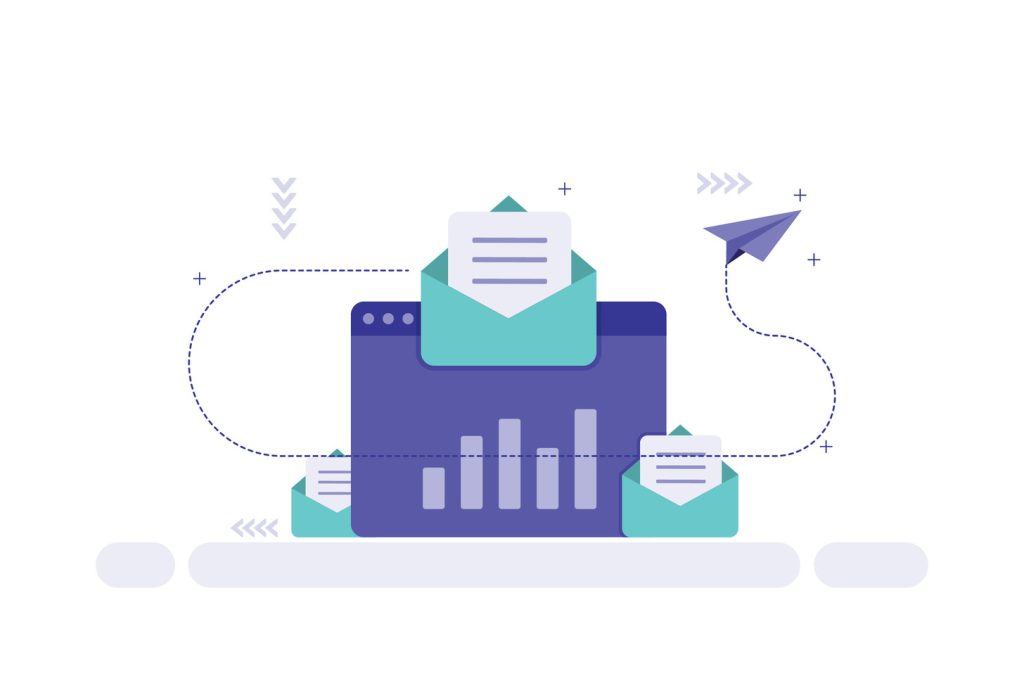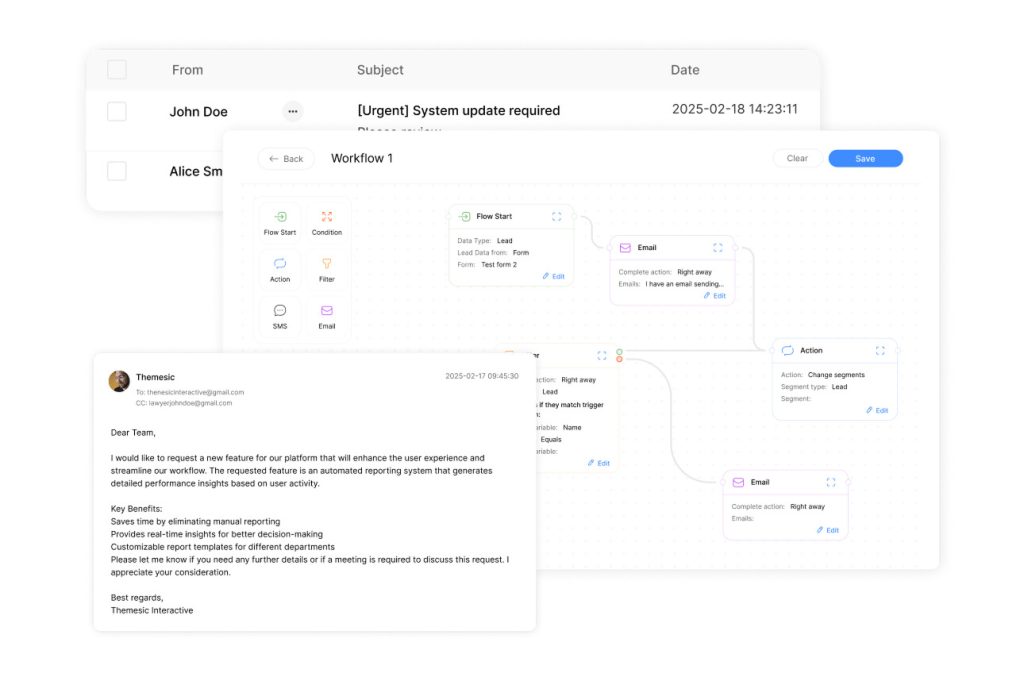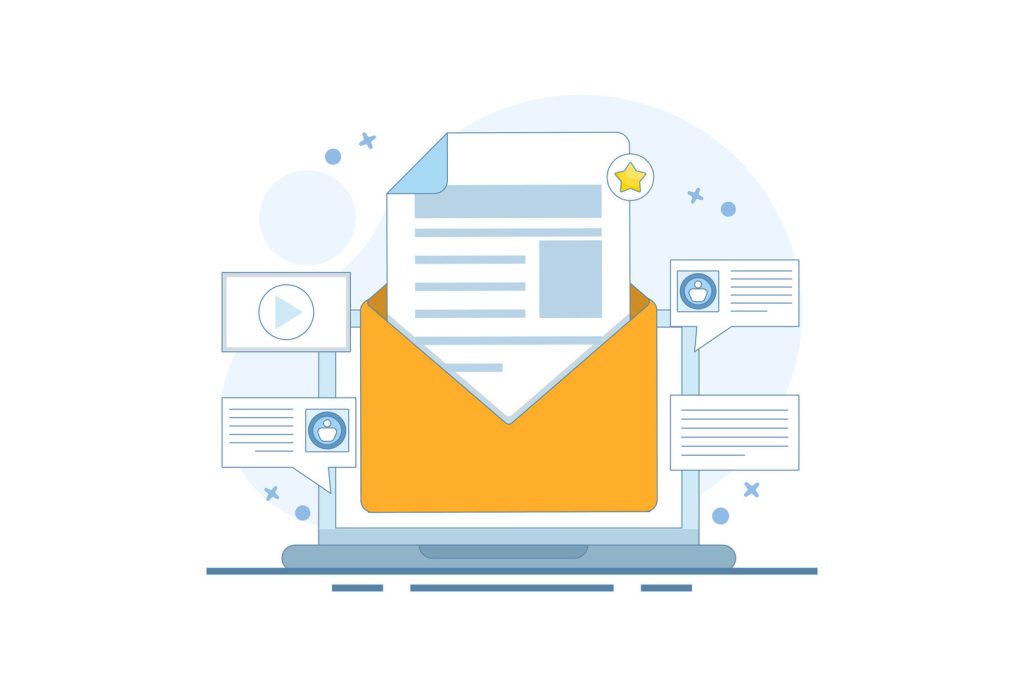Ultimate Guide to Effective Email Marketing Automation

Modern businesses face intense pressure to engage subscribers meaningfully while scaling operations. That’s where email marketing automation steps in. By using automated email marketing, organizations deliver the right message at the right time during every stage of the customer journey.
This approach goes beyond generic outreach. Instead, it uses behavioral data to trigger personalized messages that drive action, nurture leads, and strengthen customer experience.
Studies show that companies leveraging email automation generate twice as many leads as those relying solely on manual efforts. With over 4.4 billion users checking inboxes daily, a solid email marketing strategy is crucial. It transforms ordinary interactions into revenue opportunities and fosters stronger relationships with customers.
However, successful implementation requires aligning technology with audience behavior. It’s about delivering timely, relevant content while maintaining a human touch. For example, combining marketing automation tools with a CRM ensures seamless communication across all stages of the customer journey, enhancing retention and conversions. By leveraging data analytics, businesses can further refine their strategies, tailoring content to meet the specific needs and preferences of their audience. To truly maximize effectiveness, companies must invest time in training their teams to master marketing automation techniques, ensuring that every campaign resonates with customers. This approach not only boosts engagement but also fosters long-term loyalty, creating a more sustainable business model. Additionally, businesses must prioritize data analysis to fine-tune their approaches based on audience preferences and engagement metrics. By investing in training and resources to master marketing automation techniques, they can optimize campaigns and improve the overall customer experience. This strategic alignment not only boosts efficiency but also fosters deeper relationships with customers, driving long-term loyalty. Moreover, leveraging data analytics to understand customer preferences can further refine marketing strategies, leading to more personalized interactions. Investing in the best CRM solutions for marketing allows businesses to track customer interactions effectively, ensuring that each touchpoint is meaningful and drives engagement. Ultimately, a customer-centric approach, supported by the right tools, fosters loyalty and encourages long-term relationships.
This guide explores actionable frameworks to help businesses create high-performing email marketing campaigns. Readers will learn how to balance automation with personalization, choose the best tools, and measure success with meaningful data. Additionally, the guide will delve into strategies for segmenting audiences effectively to maximize engagement. Furthermore, it will address how survey automation simplified for businesses can enhance customer insights, allowing for more targeted communications. By the end of this guide, readers will be equipped with the knowledge to optimize their campaigns for increased ROI and customer satisfaction.
Key Takeaways
- Automated workflows double lead generation compared to manual outreach methods
- Behavior-triggered messaging increases relevance and conversion rates
- Integration with CRM systems enhances customer journey mapping
- Scalability meets personalization through smart segmentation
- Performance tracking ensures continuous campaign optimization
What is Email Marketing Automation?

Modern enterprises increasingly rely on email marketing automation to maintain meaningful connections while scaling communications. These tools analyze subscriber behavior and deliver precisely timed, relevant messages, bridging the gap between efficiency and human connection.
Defining Key Terms
Email marketing automation uses predefined rules to send tailored messages when users take specific actions. Unlike broader marketing automation – which handles multi-channel campaigns – this approach focuses solely on inbox-based strategies. Think welcome sequences, behavior-triggered follow-ups, and segmented nurture flows.
The system combines three core elements: behavioral tracking, dynamic content engines, and workflow builders. When a subscriber abandons a cart or downloads a resource, these components collaborate to send hyper-relevant messages.
“Automation turns customer signals into strategic touchpoints,”
notes a leading SaaS analyst.
How It Differs from Broader Marketing Automation
While general platforms manage social media, SMS, and ads, email-specific tools prioritize inbox engagement. They specialize in:
- Transactional message sequencing
- Subscriber list segmentation
- Real-time performance analytics
This specialization allows deeper optimization of open rates and conversions. Integrated CRMs enhance capabilities further, linking communication history with purchase patterns. The result? A closed-loop system where every message strengthens customer relationships.
The Evolution of Automated Email Marketing

At first, automated emails served basic purposes, like sending order confirmations or password resets. But today, automated email marketing has evolved into a powerful tool for engaging subscribers with highly tailored content based on behavior and preferences.
From Transactional Alerts to Behavior-Driven Engagement
Early tools handled routine tasks like order confirmations and shipping notices. These basic notifications addressed immediate needs but missed engagement opportunities. Behavioral triggers changed the game, linking messages to actions like cart abandonment or page visits.
Artificial intelligence now powers predictive models that anticipate preferences. Platforms analyze purchase history and browsing patterns to craft tailored content. One industry report states:
“Dynamic adaptation boosts conversion rates by 34% compared to static campaigns.”
Modern systems connect multiple data streams – CRMs, ecommerce platforms, and analytics tools. This integration creates detailed customer profiles for precise targeting. Real-time adjustments ensure messages align with evolving behaviors. Additionally, these comprehensive profiles enable businesses to implement sales process automation techniques that streamline lead generation and nurturing. By automating repetitive tasks, teams can focus on building stronger relationships with their customers. As a result, the efficiency of marketing campaigns is greatly enhanced, driving higher conversion rates and improved revenue.
- Early stage: Password resets & shipping updates
- Mid-phase: Abandoned cart reminders & welcome sequences
- Current state: AI-driven product suggestions & omnichannel coordination
The shift toward unified experiences across channels marks the next frontier. By combining inbox strategies with social media and SMS, businesses create cohesive journeys that drive repeat purchases and loyalty. This holistic approach not only enhances customer engagement but also allows businesses to leverage data for more personalized communication. For instance, incorporating sms marketing product comparisons within these unified strategies enables consumers to make informed decisions quickly, ultimately boosting conversion rates. As a result, companies can better meet customer expectations and foster long-term relationships.
Developing a Winning Automated Email Marketing Strategy
Crafting impactful campaigns begins with understanding audience pathways. Organizations must visualize every interaction point, from initial contact to post-purchase engagement. This foundation enables tailored communications that guide users toward desired actions.
Mapping Out the Customer Journey
Effective strategies analyze behavior patterns across the entire lifecycle. Teams identify critical moments like subscription confirmations or repeat purchases. One retail executive notes:
“Mapping user pathways reduced cart abandonment by 27% through targeted reminders.”
Tools tracking engagement metrics help create segmented flows for different groups. Integrating these insights with advanced marketing workflows ensures cohesive cross-channel experiences.
Setting Clear Goals and Objectives
Measurable targets drive campaign success. Priorities might include boosting repeat purchase rates by 15% or recovering inactive subscribers. Establish benchmarks for open rates and revenue per message.
Regular A/B testing refines approaches based on performance data. Organizations aligning automated sequences with business targets see 35% faster growth than those using generic blasts.
Best Practices for Email Marketing Automation
Maximizing campaign effectiveness requires blending strategic precision with creative adaptability. The most successful approaches combine behavioral insights with technical execution to deliver value at scale.
Personalization and Segmentation Tactics
Advanced personalization moves beyond surface-level customization. Systems now analyze browsing patterns and purchase histories to craft messages that address individual needs. A retail study found campaigns using dynamic product recommendations generated 42% higher revenue than generic promotions.
Effective segmentation categorizes audiences through multiple lenses:
- Engagement frequency (active vs. dormant users)
- Purchase cadence (first-time vs. repeat buyers)
- Geographic preferences (regional offers)
“Segmented campaigns achieve 58% higher click-through rates by aligning content with user priorities,”
states a recent martech industry report. Teams should regularly test subject line variations and content formats to identify high-performing combinations.
Maintaining list health proves equally critical. Removing inactive addresses preserves deliverability rates while focusing resources on engaged contacts. Combined with behavior-triggered workflows, these practices create self-optimizing systems that convert casual browsers into loyal advocates.
Email Automation Tools and Platforms

Selecting the right digital tools can make or break customer engagement strategies. Modern solutions combine behavioral tracking with workflow design, enabling teams to execute complex campaigns efficiently. Leading platforms like ActiveCampaign and Klaviyo provide enterprise-grade features at accessible price points, while niche players like Omnisend cater to specific industries.
Core Features of Top Solutions
High-performing software balances advanced capabilities with user-friendly interfaces. ActiveCampaign stands out with predictive sending algorithms and visual automation builders. Ecommerce specialists like Klaviyo integrate SMS workflows with purchase history analysis, creating unified cross-channel experiences.
“Platforms offering AI-driven send-time optimization see 22% higher open rates than basic systems,”
reports a 2024 martech benchmark study. Key evaluation factors include:
- Real-time analytics dashboards for campaign tracking
- Pre-built templates for rapid deployment
- Scalable pricing models matching business growth
System Integration Essentials
Seamless connectivity with existing tech stacks amplifies platform value. CRMs like Salesforce sync contact data with automation triggers, enabling personalized follow-ups based on deal stages. Zapier bridges gaps between tools, automating tasks like lead scoring updates when users interact with content.
Implementation success hinges on staff training and process alignment. Teams that conduct quarterly workflow audits achieve 31% faster response times to customer actions compared to those using set-and-forget approaches. Utilizing top workflow automation tools can further enhance efficiency by streamlining communication and minimizing repetitive tasks. As a result, teams can focus on higher-value activities that drive customer satisfaction. Moreover, regularly updating training programs to incorporate feedback from these audits ensures that staff remains proficient in the latest technologies and processes.
Leveraging AI in Email Marketing Automation
Artificial intelligence redefines how organizations connect with audiences through intelligent message tailoring. Advanced algorithms process behavioral signals and CRM insights to craft communications that feel individually curated rather than system-generated.
Precision Content Crafting
Modern tools analyze past interactions and demographic data to predict subscriber preferences. One CRM strategist observes:
“AI-driven systems reduce content creation time by 40% while boosting relevance metrics by 28%.”
| Capability | Traditional Approach | AI-Driven Solution |
|---|---|---|
| Subject Line Creation | Manual A/B testing | Predictive performance modeling |
| Product Recommendations | Static category-based offers | Real-time behavioral analysis |
| Send Time Optimization | Fixed schedule blasts | Individual engagement pattern matching |
Machine learning identifies patterns across millions of data points to suggest optimal messaging strategies. Dynamic content modules adjust offers based on real-time browsing activity or purchase history.
Lead scoring models automatically prioritize prospects showing high engagement signals. These systems trigger tailored follow-ups when users interact with specific resources or abandon carts. The result? Communications that adapt faster than manual processes ever could.
Mastering the Customer Journey with Automated Emails

Successful brands transform casual interactions into lasting relationships through intelligent message sequencing. By analyzing behavioral signals across touchpoints, automated systems deliver guidance that feels intuitive rather than intrusive. This approach builds trust while driving measurable outcomes.
Engagement and Nurturing Strategies
Behavior-triggered sequences respond to actions like product views or content downloads within minutes. A retail analyst observes:
“Real-time responses increase conversion likelihood by 41% compared to delayed communications.”
Value-focused nurturing flows educate prospects through curated resources. Dynamic content adapts based on engagement levels – active users receive deeper insights, while hesitant contacts get simplified explanations.
Retention and Upselling Tactics
Post-purchase sequences strengthen loyalty through personalized recommendations. Systems analyze buying patterns to suggest complementary items or service upgrades. Replenishment reminders timed to usage cycles maintain recurring revenue streams.
Loyalty program integrations reward repeat buyers with exclusive perks. Automated tier upgrades and birthday offers create emotional connections that generic promotions can’t match. These strategies reduce churn while increasing average order values.
Optimizing Email Campaign Performance
Continuous refinement separates top-performing campaigns from stagnant efforts. Teams achieve peak results by pairing real-time behavioral analytics with strategic adjustments. Advanced tracking identifies underperforming elements, from subject lines to call-to-action placement.
Platforms offering heatmap-style engagement metrics enable precise content tuning. A/B testing reveals which layouts drive 23% higher click-through rates in specific audience segments. This data-driven approach eliminates guesswork while preserving brand consistency.
Deliverability remains critical for sustained success. Regular list hygiene practices and authentication protocols maintain sender reputations. One logistics company boosted open rates by 31% through quarterly spam score audits and domain warming techniques.
Dynamic segmentation adapts to evolving subscriber preferences, ensuring messages align with current priorities. Integrating these insights with CRM data creates self-improving systems where each campaign builds on previous learnings. The outcome? Consistent growth through intelligent iteration.

